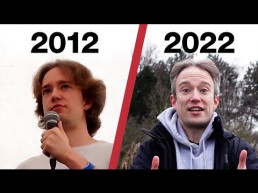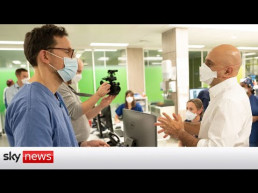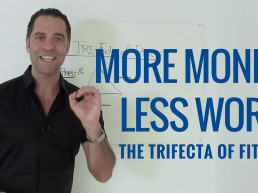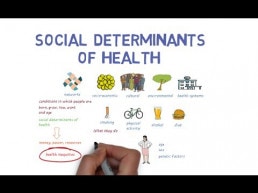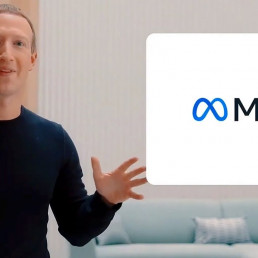
Video reading area
Origin Ten Technology is driven by a desire to make the world a better place.
This area has been designed to improve Video accessibility for user with hearing problems and for those who just prefer to read.
Everything Facebook revealed about the Metaverse in 11 minutes By CNET
It is time for us to adopt a new company brand to Encompass, everything that we do to reflect who we are. And what we hope to build. I am proud to announce that starting today. Our company is now meta.
Our mission Remains the Same still about bringing people together and we’re apps in their brands. They’re not changing either and we are still the company that designs technology around people.
Hey and welcome to connect today. We’re going to talk about the metaverse starting with the most important experience of all connecting with people.
Imagine you put on your glasses or headset in your instantly in your home space and its parts of your physical home, recreated virtually. It has things that are only possible virtually and it has an incredibly inspiring view of whatever you find. Most beautiful. Hey, are you coming? Yeah, just gotta find something to wear.
All right, perfect. Oh, hey Mark. Hey, what’s going on? Whoa, we’re floating in space, huh? Who made this place? It’s awesome. Right? It’s from a crater. I met in La. This place is amazing. Boz that you, of course, it’s me. You know, I had to be the robot, man. I thought I was supposed to be the robot.
Whoa, I knew you were bluffing. Hey, wait, where is Naomi? Let’s call her.
Hey, should we deal you in? Sorry, I’m running late, but you’ve got to see what we’re checking out. There’s an artist going around, Soho hiding, a are pieces for people to find.
3D street art that’s cool. Send that link over so we can all look at it.
This is stunning, is that it’s awesome. The movement. Wait, it’s disappearing. This is amazing. Hold on. I’ll tip the artist in, they’ll extend it. Wow, privacy and safety need to be built into the metaverse from day one. You’ll get to decide when you want to be with other people when you want to block someone from appearing in your space or when you want to take a break and teleport to a private bubble to be alone. You’re going to be able to bring things from the
World into the Met immerse, almost, any type of media that can be represented, digitally photos videos, art, music movies, books games. You name it? Lots of things that are physical today, like screens will just be able to be Holograms in the future. We won’t need a physical TV. It’ll just be a one dollar hologram from some high school, kid halfway across the world. And you’ll be able to take your items and project them into the physical world as Holograms and augmented reality to
One part of this is Horizon home, which is our early vision for a home space in the metaverse Horizon. Home is the first thing that you’ll see when you put on your quest headset. Today, there are already a bunch of options to choose from and in the future anyone will be able to create one. We’ve just called it home until now because it’s been missing something very important. People soon. We’re going to be introducing a social version of home where you can
Invite your friends to join you as avatars, you’ll be able to hang out watch videos together and jump into Apps together. Then there is Horizon worlds, which is where you can build worlds and jump into them with people. Horizon is designed to make it possible for everyone to create and we’re already seeing people build some really interesting experiences from creating new games together to throwing surprise parties and VR that family and friends around the world can join over the last year and a half, a lot of us.
Who work in offices have gone remote. And why miss seeing the people I work with, I think remote work is here to stay for a lot of people. So we’re going to need better tools to work together. Let’s take a look at what working in the metaverse will be. Like, imagine. If you could be at the office without the commute, you would still have that sense of presence shared physical space. There’s chance interactions. That make your day all accessible from anywhere. Now, imagine that you have your perfect work set up and you can actually do more than you could.
And your regular works out and on top of all that you can keep wearing your favorite sweatpants. And as we focused more on work and frankly is we’ve heard your feedback more broadly. We’re working on making it so you can log into quest with an account other than your personal Facebook account. We’re starting to test support for work account soon. And we’re working on making a broader shift here within the next year. I know this is a big deal for a lot of people. Not everyone wants their
Media profile linked to all these other experiences. And I get that especially as the metaverse expands and I’ll share more about that later, but I’m genuinely optimistic about work in the meta verse. We know from the last couple of years that a lot of people can effectively work from anywhere, but hybrid is going to be a lot more complex when some people are together and others are still remote. So, giving everyone the tools to be present no matter where they are, whether it’s a hologram sitting next to you in a physical.
Meeting or in a discussion taking place in the metaverse that’s going to be a game-changer. I think this could be very positive for our society and economy giving people access to jobs and more places. No matter where they live will be a big deal for spreading opportunity to more people dropping. Our daily commutes will mean less time stuck in traffic and more time doing things that matter and it’ll be good for the environment. We plan to continue to either subsidize our devices or sell them at cost.
To make them available to more people will continue supporting sideloading and linking to PCS. So consumers and developers have Choice rather than forcing them to use the quest store to find apps or reach customers and will aim to offer developer and Creator services with low fees in as many cases as possible. So we can maximize the overall Creator economy. While recognizing the to keep investing in this future will need to keep some fees highwomen.
For some period to make sure that we don’t lose too much money on this program. Overall after all while a growing number of developers are already profitable. We expect to invest many billions of dollars for years to come before the metaverse reaches scale. Today. We’re introducing the presence platform, which is a broad range of machine perception and AI capabilities that Empower developers to build mixed reality experiences on quest to do. You want to tell us more about the presents platform. We’ve said before that realistic presence is the key.
To feeling connected in the metaverse and the presence platforms capabilities are what’s going to deliver on that, promise things, like environmental understanding content placement in persistence voice, interaction standardized hand interactions. In fact, let’s start with hands. I mean, the human hand is an engineering Marvel and bring the hands into VR was no easy feat required. A lot of collaboration against product design research. We continue to improve that product, finding new ways to navigate with gestures interact with VR. So, today, we’re introducing the
Her action SDK a library of modular components that will make it easy to add hand interactions to your apps. That’s pretty exciting. But next year. We are releasing a new product that will push the boundaries of VR even further. We’ve codenamed IT project Cambria. So this isn’t the next Quest. It’s going to be compatible with Quest, but Cambrian will be a completely new Advanced and high-end product. And it will be at the higher end of the price Spectrum. To our plan here is to keep building out this product line to release.
Our most advanced technology before we can hit the price points that we target with Quest. All right. So let’s talk about some of the new advances here. Yeah. Sure. There’s a ton of new tech going into Cambria. For example, your avatar will be able to make natural eye contact and reflect your facial expressions in real time. This way people, you’re interacting with will have a real sense of how you’re actually feeling. It does mean building more sensors into a form factor, that’s comfortable to wear for a while. And because we want
Yar to be for everyone. We also have to make sure avatars represent a diverse set of human facial features and skin tones as well. As paying attention to things like glasses and beers that may get in the way of some of the sensors. So that’s going to be a big step forward for social presence, and I’m really glad that we’re focused on making it inclusive from the start. Now, what about unlocking more mixed reality experiences, I mean, imagine working at your virtual desk with multiple screens while seeing your real desk. So, clearly,
So that you can pick up a pen and write notes without taking your headset off or you’re doing a workout with a virtual instructor in your living room. It’s going to be so cool. We’re already seeing the potentials of these kinds of experiences today, as people are building for pastor API, but with Cambria will be taking this to the next level with high-resolution colored mixed reality pass through. We essentially combine an array of sensors with reconstruction algorithms, to represent your physical world in the headset, with a sense of
Epps and perspective. But the ultimate goal here is true augmented reality glasses and we’ve been working on that too. Today. I want to show you an experience that we’ve been working on for project nazare, which is the code name for our first full augmented reality glasses.
Here, you’ll see, you’re chatting with friends on WhatsApp, and planning a game night. You can select a game and then as you walk over your kitchen, you can easily just put your game onto the table and you’re off. And that’s the kind of experience that augmented reality will unlock.
There’s a lot of technical work to get this form factor in experience. Right? We have to fit hologram displays projectors, batteries radios, custom silicon chips cameras, speakers sensors to map the world around you, and more into glasses that are about 5, mm thick. So, we still have a ways to go with nazare, but we are making good progress.

